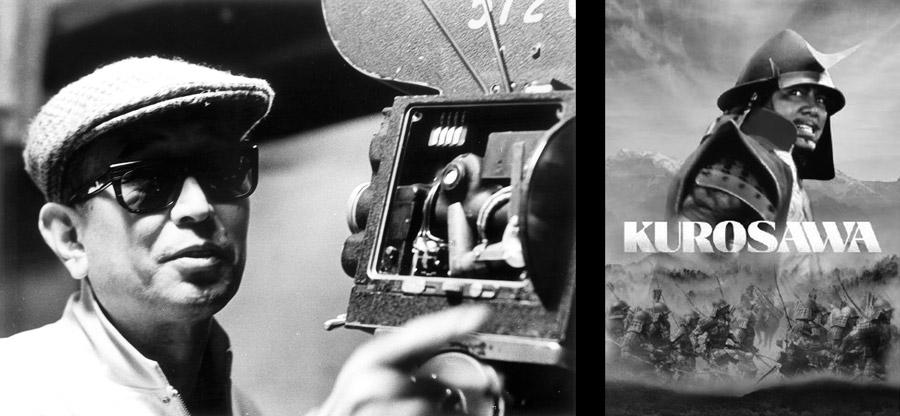In our last film review, we discussed the transcendent efforts of the late Akira Kurosawa to distinguish the intricacies of human fallibility in his seminal crime drama, Rashomon. Dissecting the film’s flurry of diverse character perspectives in order to explore the unreliability of human nature and how, as a prideful species, we conceal aspects of truth that might tarnish our self-perceived notions of grandeur and/or dignity. This week, however, we’re moving on to another of Kurosawa’s masterpieces, the highly-acclaimed and epochal action film, Seven Samurai (1954).
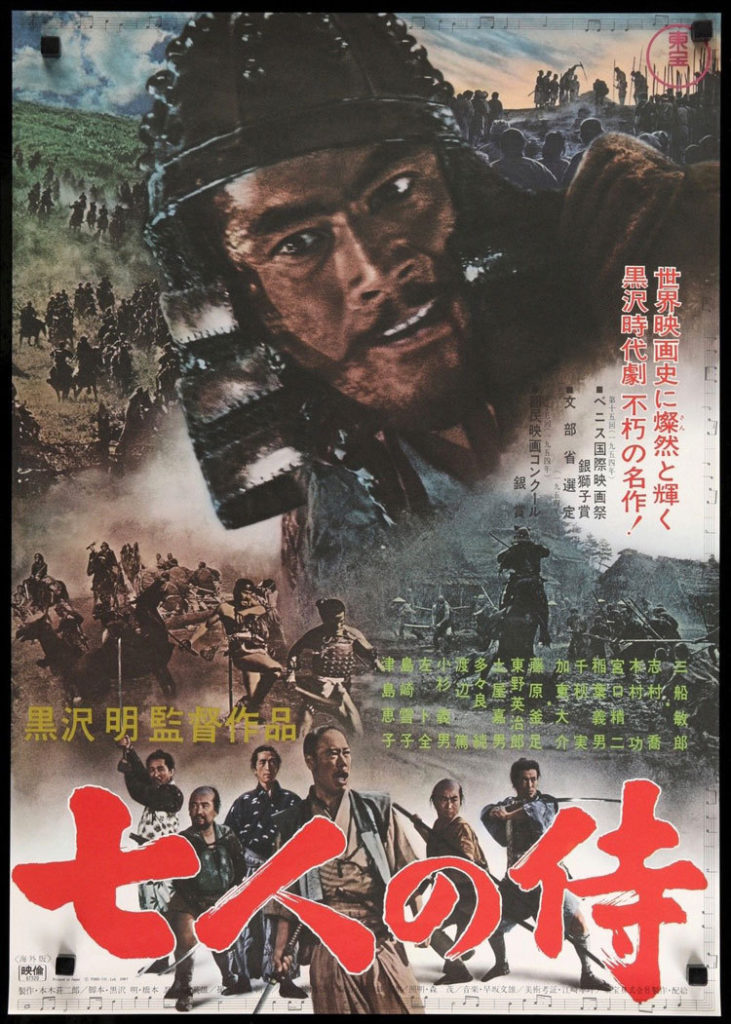
The Plot
Arguably the most celebrated and influential piece in Kurosawa’s pioneering repertoire of film wonders, Seven Samurai is famously the film which inspired the likes of myriad western interpretations – i.e. the recent “Sanctuary” episode in Disney’s Star Wars spinoff, The Mandalorian (as well as the animated Clone Wars effort in the episode “Bounty Hunters”) and of course the film’s seminal 60s western remake, The Magnificent Seven, by John Sturges (adapted subsequently in Antoine Fuqua’s 2016 contemporary remake).
As a forebear to the aforementioned slew of western interpretations, it’s no wonder that Vox lauded the film as an elegant, primal cinematic template, where, although differing in location and character, the bare-bones remain intact: a group of villains intend on assaulting a small settlement; the inhabitants of said settlement hire a misfit company of warriors to fight them off; the warriors help fortify the town; some of them die but eventually the good guys win and the settlement is saved. Albeit with varying aspects in motive, plot, and character discrimination, the story is, essentially, always the same – proving time and time again the lingering effect of Kurosawa’s original film and the lasting impact of a tale as universal as it was formative on the world of cinema.
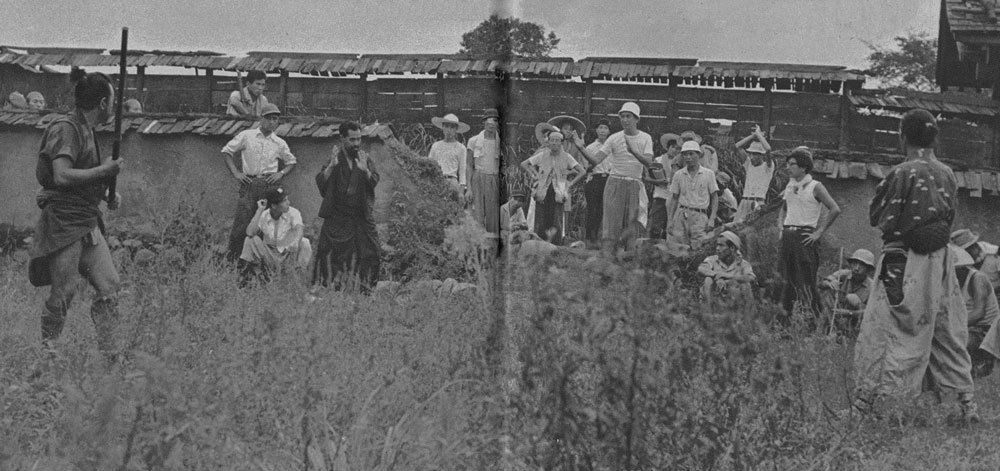
Kurosawa’s Seven Samurai begins with an overhead shot of a small village that has been repeatedly assailed by a large group of bandits. After overhearing a conversation between the bandits, an inhabitant farmer discovers that the bandits intend to come back and raid the poor village when the harvest is due, in order to make off with the largest possible bounty. The farmer then runs to tell of this news to the rest of the village, where – after discussing with the village elder and a fellow miller – they decide that enough is enough, and they should entail enlisting a group of samurai to defend them from the oncoming onslaught of bandits.
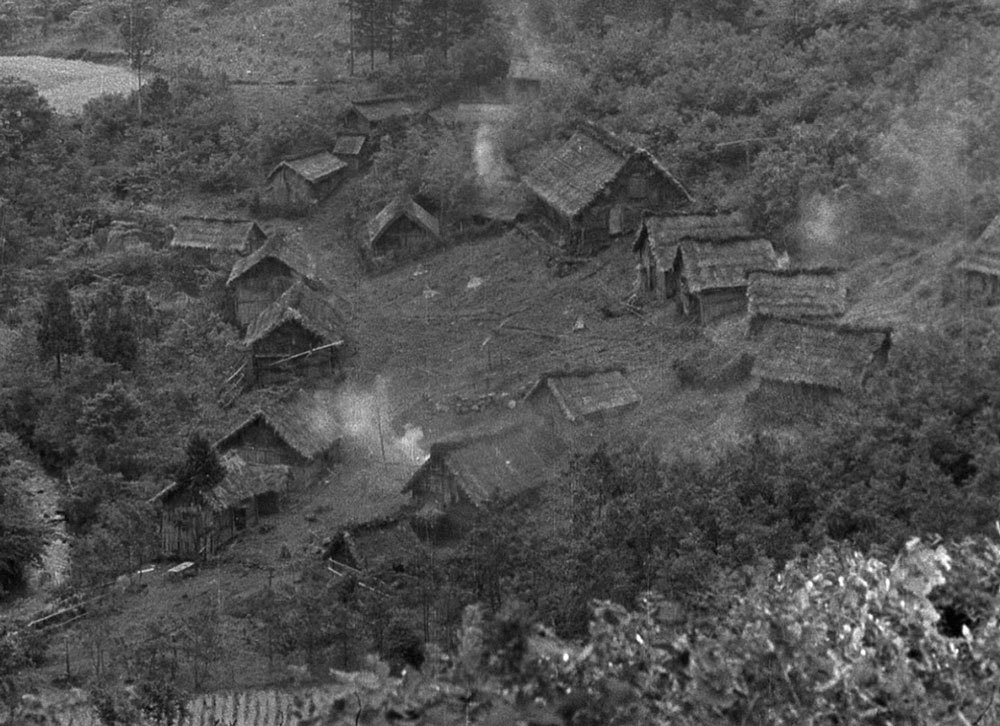
Thus ensues a tale of heroism, gallantry, and sacrifice as the villagers hire a ragtag crew of samurai warriors (some of whom aren’t officially even samurai) to pit and prepare the inhabitants against the villainous bandits. Fortifying the village, training its people, and proving the hailed earnestness – and great skill – of traditional samurai warriors.
The Samurai
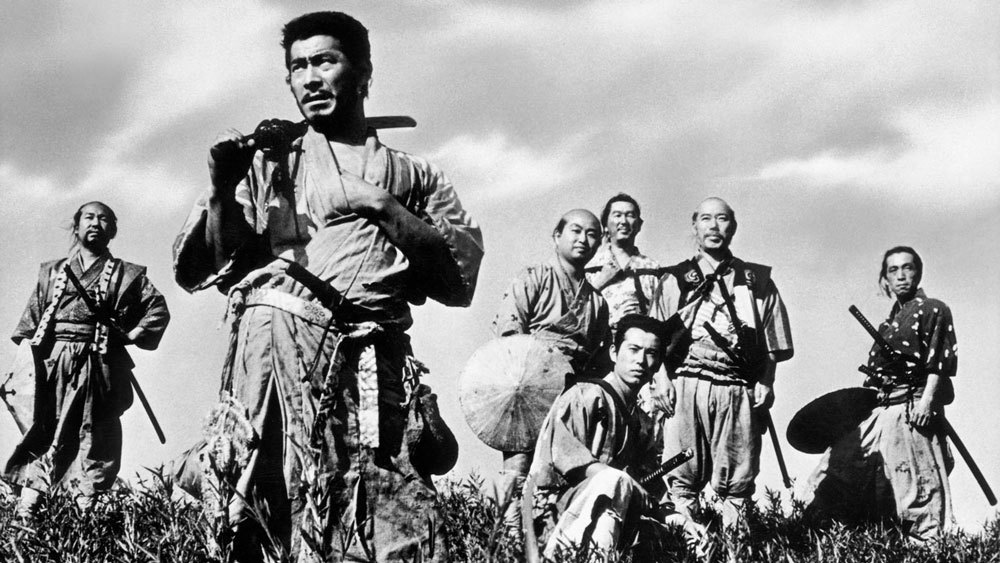
Although largely a grand epithet to the legendary valour of traditional Samurai, Kurosawa simultaneously interweaves an array of unexpected character motives that somewhat deconstruct the withstanding literary perception of the historical warriors. Breaching the otherwise famed notions of samurai – their empathy and skill – to employ more nuanced backgrounds to many of his earnest, and yet, broken heroes. For instance, the character of Kikuchiyo (played by Kurosawa’s go-to flawed hero, Toshiro Mifune) is somewhat of an unskilled, unproven, wannabe samurai, whose narrative orphanage is revealed to be the per result of samurai intervention – his parents, killed as a consequence of samurai raids on his own childhood home. Resulting in his carrying of a familial scroll which Kikuchiyo insists proves his samurai, though most likely was stolen as the scroll implies that the character is in fact only a teenager.
Kikuchiyo is plagued by the unjust notion that samurai are the prophetic warriors of legend and yet is belittled by them at every chance – driven away when he attempts to enlist with them and scolded when he discovers armour scavenged from dead samurai by the lowly villagers. His inclusion within the tale begs the question: are samurai truly heroic? Or rather simply harbingers of death and destruction, only hailed as earnest and good when their master’s intent presumes so.
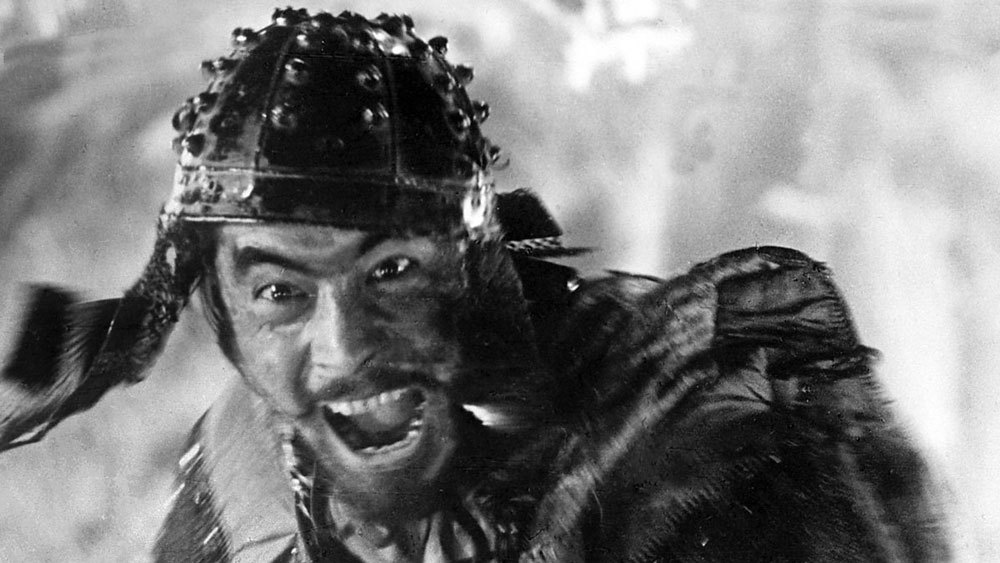
Moreover, the end of the film chiefly distorts the heroic nature of the samurai. Our central samurai, Kambei (portrayed soulfully by Takashi Shimura) regrets his survival on the battlefield of the village, claiming pensively that “[we’ve] lost yet again. With their land, the farmers are the victors… not us”. Suggesting thus his acknowledgment that samurai are but weapons in the confines of war and battle, led dutifully to exact some form of justice which, in reality, proves neither their heroism nor their earnestness. It simply makes them pawns in a never-ending struggle for dominance. These samurai, as is true in history, are neither honourable, nor heroic – they are simply permitted by the whims of their masters (in this case, the villagers) to cause more death and destruction. And, although it may seem just and righteous, most of them are only enlisting for a scrap of food and to prove their worth as these legendary soldiers. After Kambei’s iconic final line (mentioned above) the film appropriately closes on the graves of the four warriors who’ve died in the protection of the village – suggesting that, as is the reality of the acclaimed fighters, the masters are the winners, not the samurai.

Working closely with cinematographer, Asakazu Nakai, Kurosawa made sure to give each and every shot of the film displayed a technical mastery that matched the thematic density of the genius screenplay. Dispersing heroic characters in equal fashion, framed in deep-focus compositions that juxtapose sound and image; utilising Nakai’s pioneering mirror technique (used prior on Rashomon) to reflect the sun’s natural rays into strong beams of heavenly light; illuminating the sets, the locations, and the actors with an ethereal and crisp aesthetic. With Seven Samurai, Kurosawa perfected his sharp and dynamic style of filmmaking by utilising experts from across the filmic spectrum (Nakai, composer Fumio Hayasaka and actors Mifune and Shimura, among others) to create a profound examination of moral issues in a story epic in nature and mindful in approach.
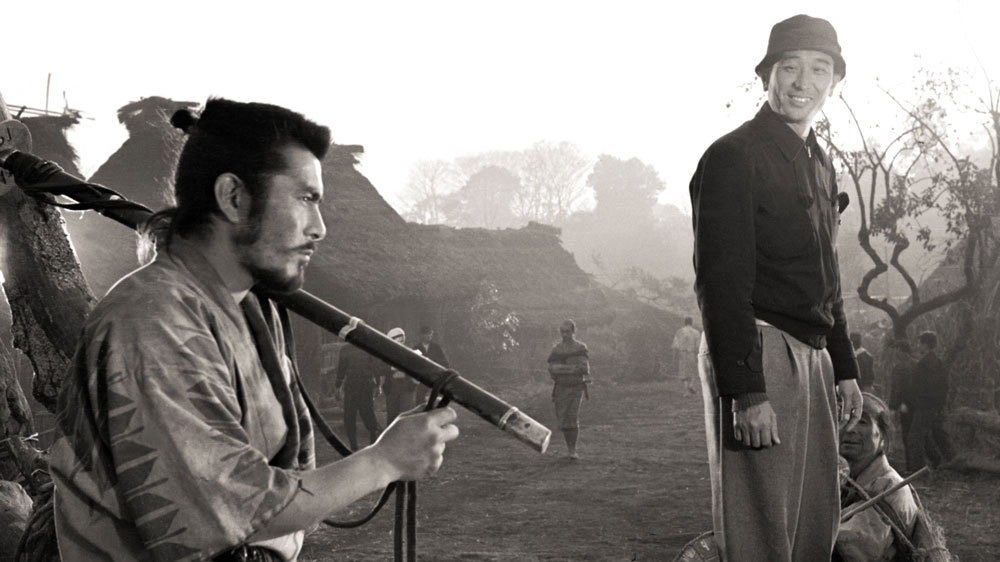
The monumental impact of Kurosawa’s Seven Samurai lingers far beyond the reach of its successors and arguably beyond the reach of the director’s exceedingly powerful body of work. Proving, immeasurably, his ability to create works of jidaigeki (“period drama”) that transcend setting and resonate globally.
Lauded as one of the greatest films of all time and largely seen as Kurosawa’s opus, Seven Samurai, earning two Oscar nominations at the 1957 Academy Awards, was a seminal influence on a slew of referential works from the 20th Century, inspiring an array of iconic filmmakers (such as George Lucas and Quentin Tarantino). As affirmed by the late, great film critic, Roger Ebert, “Akira Kurosawa’s “Seven Samurai” is not only a great film in its own right, but the source of a genre that would flow through the rest of the century”.

Emitting a thematic resonance which continues to flow into the 21st Century, seemingly unceasing in its impact and affect, Seven Samurai remains a masterwork of technique, skill, vision and artistry. It’s Kurosawa at his best, and that’s no small feat.
















































